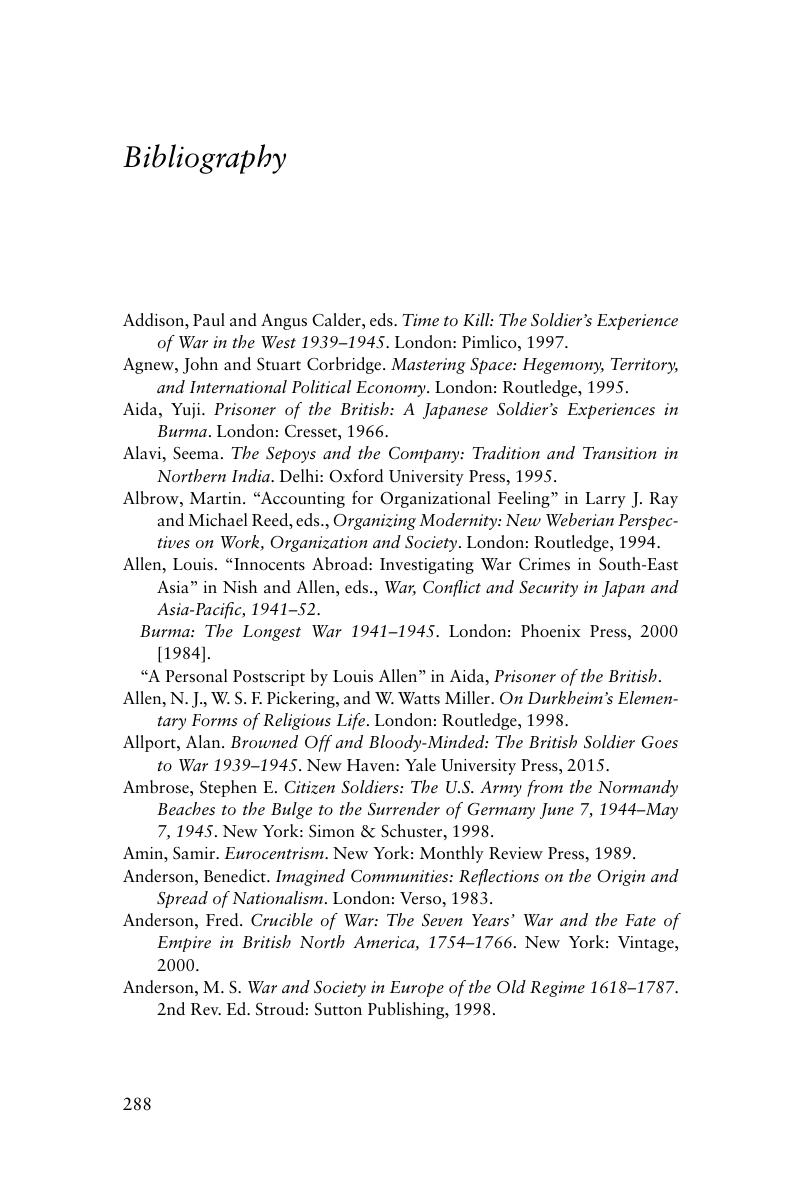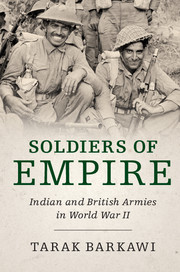Book contents
Bibliography
Published online by Cambridge University Press: 29 June 2017
Summary

- Type
- Chapter
- Information
- Soldiers of EmpireIndian and British Armies in World War II, pp. 288 - 314Publisher: Cambridge University PressPrint publication year: 2017

